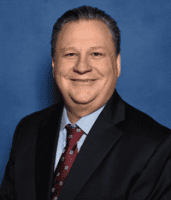Innovation, change management, persistence define successful strategies
Appropriate staffing—a dynamic process that aligns the number of nurses, their workload, expertise, and resources with patient needs to achieve quality outcomes within a healthy work environment—is a longstanding goal in healthcare. Achieving this ideal, as defined in 2023 by the Nurse Staffing Task Force, requires heavy doses of creativity, change management, communication, and persistence, according to nurse leaders implementing various strategies. Above all, they said, appropriate staffing in today’s environment demands rethinking existing care models with a bent toward bold experimentation. “It doesn’t matter how good we are at recruiting and retaining nurses. We’re never going to have enough if we keep working the way we’re working now,” said Sylvain Trepanier, DNP, RN, CENP, FAAN, FAONL, senior VP and CNO at Providence, a 51-hospital system headquartered in Renton, WA. “Nibbling on the edge is just not going to do it.”
The American Nurses Association (ANA) and other leading organizations collaborated in 2022 in the Partners for Nurse Staffing Think Tank to identify 150 strategies that accountable parties could implement within 12 to 18 months and assess with measurable outcomes (hubs.ly/Q01St1fc0). Centered on six priority topics, these recommendations range from routinely collecting unit-level data on the safety of the work environment to creating a system for rewarding nurses who maintain direct care roles.
In May 2023, ANA, as a member of the Task Force, identified another 65 proposed long-term recommendations designed to spur innovation, policy, and regulatory action, encourage new care models, and effectively support direct care nurses and nurse leaders (hubs.ly/Q01St1Nq0).
Healthcare organizations, ANA’s constituent and state nurses organizations (C/SNA), nursing workforce centers, and other stakeholders have been working diligently to act on these recommendations and other strategies as appropriate for their practice and work-place environments. Those who have found successes and those still striving for solutions shared their experiences with ANA.
Old becomes new


Over the past 2 decades, licensed practical nurses (LPNs) largely have been phased out of acute care settings. However, the Think Tank recommended that healthcare organizations “embrace” them as a strategy to diversify the workforce.
BayCare Health System in Clearwater, FL, which still had LPNs in its 16-hospital acute care workforce, re-imagined care delivery during the pandemic by using LPNs in a team nursing model. LPNs and patient care technicians (PCTs) work with and under the supervision of RNs as a team in 43 med-surg units, in interventional radiology and dialysis units, and in pilot programs in ICUs and NICUs. This model also has proven to be “extremely successful” in BayCare’s emergency departments, where LPNs support triage, fast-track, and discharge processes, according to Rocky Hauch, DNP, RN, PCCN, an advanced professional development practitioner and Florida Nurses Association member, who oversees the initiative.
“Although we had LPNs in our organization, their numbers had declined over the years. So, this was breathing new life [into an old model],” said BayCare Chief Nurse Executive Lisa Johnson, MSN, RN, NEA-BC. “LPNs are a valuable resource that can really augment the care our RNs are delivering. They have wonderful skill sets and allow us to stretch our delivery model. If we limited ourselves to RNs, we wouldn’t have enough staff.”
BayCare has coupled this initiative with “earn as you learn” programs for employees to become PCTs, LPNs, and RNs. LPNs also have been included in the system’s shared governance model, with an LPN Committee, and an LPN co-chair who serves on BayCare’s Professional Practice Council. All eligible BayCare hospitals hold ANCC Pathway to Excellence® Program designations.
Inside contractors
The unprecedented surge of patients during the pandemic vastly increased hospital outlays for contract RNs. Although the need for and costs associated with travel nurses have calmed since the height of the pandemic, the overall staffing shortage means hospitals still rely on contractors. Under the topic of building a flexible workforce and work environment, the Think Tank recommended creating site, multihospital system, or seasonal and surge float pools.
ECU Health in Greenville, NC, established a travel staffing program in March 2022 to accomplish this aim. This internal staffing agency provides coverage across the system’s nine hospitals, drawing nurses from a range of specialties, experience levels, and locations, according to Chief Nursing Executive Trish Baise, DNP, RN, NEA-BC, FACHE, a North Carolina Nurses Association member. “We were looking at how we could address the really heightened expense around external contract labor while also recognizing that we couldn’t necessarily recruit the number of internal team members we would need to fill the gap from a capacity perspective.”
The program has curbed ECU Health’s external contract costs, provided both ECU Health and contractors greater flexibility while the organization maintains desired staffing levels, and drawn contractors closer to ECU Health, according to Baise. Contracted nurses commit to 13-week assignments up to 364 days, after which they take a break for at least 92 days. These nurses have higher hourly wages than ECU Health employees, but don’t receive benefits, and likely have less-desirable assignments and schedules, Baise said. As of mid-July 2023, the program had engaged 630 participants with 325 active at that time. As many as 25% had some prior connection to ECU Health.
Virtual nursing
Virtual nursing, touted as a promising solution to the staffing crisis, is an innovative care delivery model described by the Think Tank. Hospitals and healthcare systems are in various stages of implementing this model, including Providence and BayCare. Providence, starting with a single unit at one facility, is cautiously expanding its program, called Co-Caring, initially to nine other sites. “We’re being very deliberate about approaching this methodologically and identifying and inviting unit leaders,” said Trepanier, a Washington State Nurses Association member. “We have a tailored process where we assess the team, the leadership team, and what’s going on in that environment.”
Lift-off for Co-Caring took place at a med-surg/telemetry/observation unit at Covenant Medical Center in Lubbock, TX, an ANCC Magnet Recognition Program® facility. The model involves remotely connected virtual RNs in a three-person team rounding together with an onsite RN and certified nursing assistant (CNA) for each patient. Virtual nurses concentrate on admissions, discharges, and patient education; onsite RNs carry out the nursing process, while CNAs handle tasks like assisting patients with activities of daily living.


After just 6 months, RN turnover rates on the unit dropped by 73%, and rates for the entire staff fell by 55%. These figures held after 8 months, according to Trepanier. The unit’s nurse manager, Julie Wright, MSN, RN, a Texas Nurses Association member, had struggled to recruit and retain staff, in a setting typically promoted to new graduates as an experience-gaining steppingstone. But now, she said, “my pitch is, come expect to have a good day. Work where you have a support system, where you have an experienced virtual nurse you can lean on, and where you’ll have a CNA you’ll be working with.”
Both she and Trepanier emphasized that the innovation of Co-Caring isn’t simply virtual nurses. “It’s about changing the entire model of care. This is not layering a virtual nurse on top of a dysfunctional environment for nurses,” said Trepanier. “In that case, you may get a little bit of benefit but you’re not going to get enough, to justify the expense.”
The 2023 ANA Membership Assembly recommended that ANA develop a national policy to address standardization of virtual nursing practice as a modality and consider funding and reimbursement models, as well as implications associated with licensure, regulation, and liability.
State-level actions


Both the Think Tank and Task Force contemplated that some recommendations would be better accomplished collectively among stakeholders. One such coalition is in Hawai’i, where 25 stakeholders representing 16 organizations are collaborating to develop and implement a statewide strategy for wellness as a recruitment and retention factor. The Hawai’i State Center for Nursing, led by director Laura Reichhardt, MS, APRN, AGPCNP-BC, serves as the group’s convener.
Feedback from a Hawai’i State Center workforce supply survey led to the group’s formation, according to Reichhardt, a Hawai’i-ANA member. “We’re using the Think Tank as our launching pad to come up with strategies and actions to address the needs that we have identified in our state,” she said. “For our statewide initiative, if an organization is doing something, we can talk about it in the group, but we won’t address things that are within their control. We don’t need those to go to a higher statewide collaborative.” She added, “An initiative doesn’t need to be owned by us, but we as a convener of nursing stakeholders can bring in the right people to make sure that vision is realized.”
One of the ideas that bubbled up from these discussions is a statewide campaign to educate the public and nurses about safety expectations in healthcare settings. Hawai’i enacted a law in 2018 making violence against a nurse a felony, but there have been limited instances of such charges being filed, according to Reichhardt. One of the factors behind this, the group learned, was that in some counties, “there was this perception that if a nurse filed a police report, they would have to give their personal address, which made them feel they would be giving their identifying information to the person who committed harm against them,” Reichhardt explained. The public education campaign would alert nurses that they can use their work addresses to file such complaints and inform the public about the consequences of harming nurses.
The group has a long-term goal of a multifacility statewide float pool. “That will probably be more cumbersome to work out because it involves so many more variables,” Reichhardt said. Although Hawai’i’s remoteness and workforce conditions standout from other states, she believes similar statewide or regional coalitions could work well in other states.
Legislation and regulation
ANA C/SNAs have been on the forefront of promoting state-level regulations and legislation to improve nurse staffing. Notably, in 2023, the Oregon Nurses Association in collaboration with the Oregon Association of Hospitals and Health Systems and others won passage of a hospital minimum nurse staffing mandate. Next door in Idaho, Anna Rostock, MBA, BSN, RN, NE-BC, and Randall Hudspeth, PhD, MBA, MS, APRN-CNP, FRE, FAANP, the president and executive director of ANA-Idaho, respectively, have no expectation of similar legislation passing in their predominantly rural state with about half of its hospitals designated as critical access. Amid what Hudspeth described as “a desperate situation,” the most positive staffing news is a rural loan repayment program recently passed by the state legislature that will repay up to $25,000 of a nurse’s loans over a 3-year period of service in a rural area.
In Colorado, the legislature passed a law in 2022 supported by the Colorado Nurses Association that requires hospitals to have nurse staffing committees with at least 60% participation by clinical staff nurses. The law and associated rulemaking require hospitals to create, evaluate, and report nurse staffing plans to the Colorado Department of Public Health and Environment. Separately, the Colorado Nurses Association developed a flyer mailed to registered nurses across the state that outlines seven steps they can take to protect themselves against unsafe staffing, according to Executive Director Colleen Casper, DNP, MS, RN.
ANA supports safe patient standards including ratios that are acuity- and setting-specific as per nursing assessment and enforceable.
Success strategies
Organizational and statewide leaders emphasized common elements for staffing initiative success:
Keep experimenting. At Covenant, Wright found that additional CNAs supporting Co-Caring initially weren’t being fully utilized. She dove in to further understand qualms nurses accustomed to total patient care had about team nursing. Tweaks to beside care work-flows ensued. Combined with virtual nurses, these changes resulted in “magic,” she said.
Persist. At BayCare, Hauch sees a predictable pattern of about 6 months for a unit to completely embrace LPNs in a team model of care. “Nurses don’t like change. We’re very protective of our patients. [Our resistance to change] has to be overcome,” he observed. For each implementation, he follows a detailed strategy to continually communicate, identify, and work with early adopters, and problem-solve.
Communicate. Early, ongoing, and thorough communication supported staffing innovation rollouts at BayCare, ECU Health, and Covenant. At Covenant, Wright emphasized how crucial communication was to ensure nurses understand how Co-Caring would work. Like-wise, Baise reported that clear communication was necessary for ECU Health employees to know how their pay, benefits, and schedules would differ from travel staffing program contributors.
Support nurse managers. Johnson and Trepanier underscored the necessity of identifying and supporting creative and competent managers involved in staffing initiatives. Hauch’s guidance has been instrumental in keeping BayCare’s LPN program on track, according to Johnson. “When he hears that a unit is having a tough time with this, he’s there the very next day. He’s at their elbow showing them how this can be done and decreasing their anxiety,” Johnson said. “It’s so hard, and if it’s not done slowly and well, it will fail.”
Evaluate and reset. Baise stressed that ECU Health continually evaluates its travel staffing program. “We’re constantly thinking about the different shifts, what people care about from a benefits perspective, what they’re looking for in work environments, and take all that into consideration as we build out our models for the future.”
Consult colleagues. Trepanier suggested that organizations exploring virtual nursing “look at this as if it were the biggest project ever. The change management [involved] can’t be overstated, so that requires all the various stakeholders.” Providence also consulted with organizations ahead of it on the virtual nursing curve.
Take the long view. Many of the conditions that led to the nurse staffing crisis persist and will take ongoing concerted efforts to ease. This means continual innovation design, implementation, evaluation, and adjustment, Reichhardt said. “This should be a lifelong initiative,” she said. “We should be working on this for the rest of our careers and the people after us should be working on it. This is a sea change. It’s not a moment.”
—Genna Rollins is a writer/editor at ANA.
American Nurse Journal. 2023; 18(10). Doi: 10.51256/ANJ102332




















